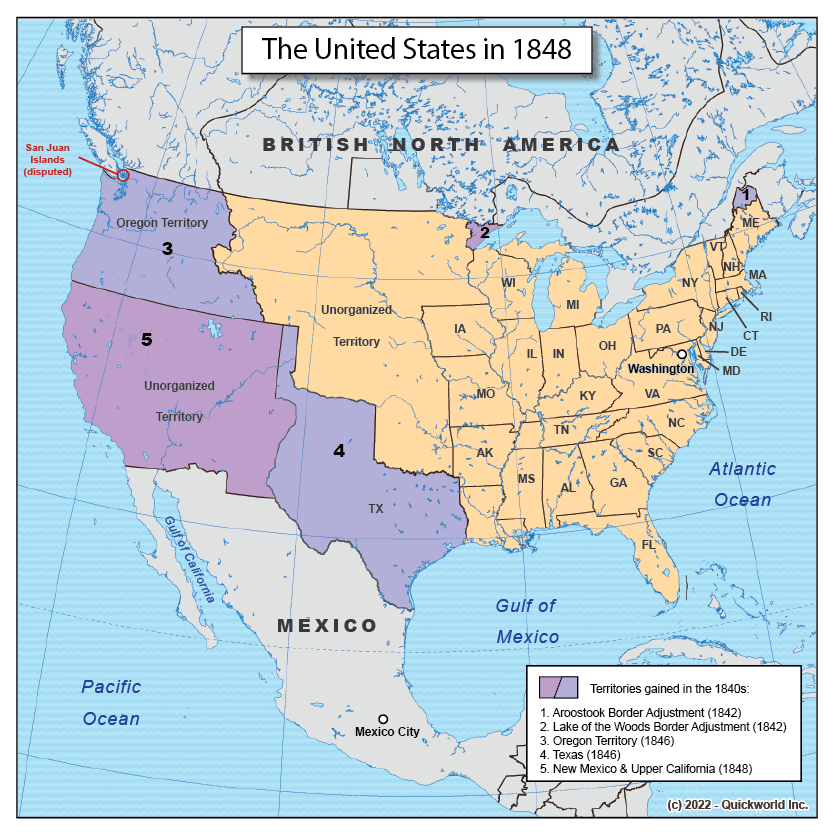Our Series on Territorial Formation takes us to the mid 19th Century, when the United States of America gained access to the Pacific with the quick sequence of integration of the Texas Republic, the Oregon Territory, and the territories gained from the Mexican-American War of 1848.
Texas was a province of Mexico that saw an influx of American settlers in the first half of the 19th century, which led to the secession of the province as the Republic of Texas in 1836. The Republic of Texas joined the Union as the 28th State in 1845. In the North, a long dispute with Great Britain over sovereignty of land known as Oregon by the US and Columbia by Britain led to an extension of the land border along the 49th Parallel all the way to the Pacific shore in 1846, creating the Oregon Territory.
The sparsely populated Mexican territories of Upper California and New Mexico were next. The United States, eager to reach its "Manifest Destiny" of controlling all land between both oceans, tried to purchase those territories from Mexico, but the refusal of the Mexican government, followed by border incidents in the disputed region of Western Texas, led to a war that lasted from 1846 to 1848. The Mexican-American War ended with an American victory and the annexation of New Mexico and Upper California. The territorial extension of the United States thus corresponded to the modern 48 lower states.
The United States in 1848


